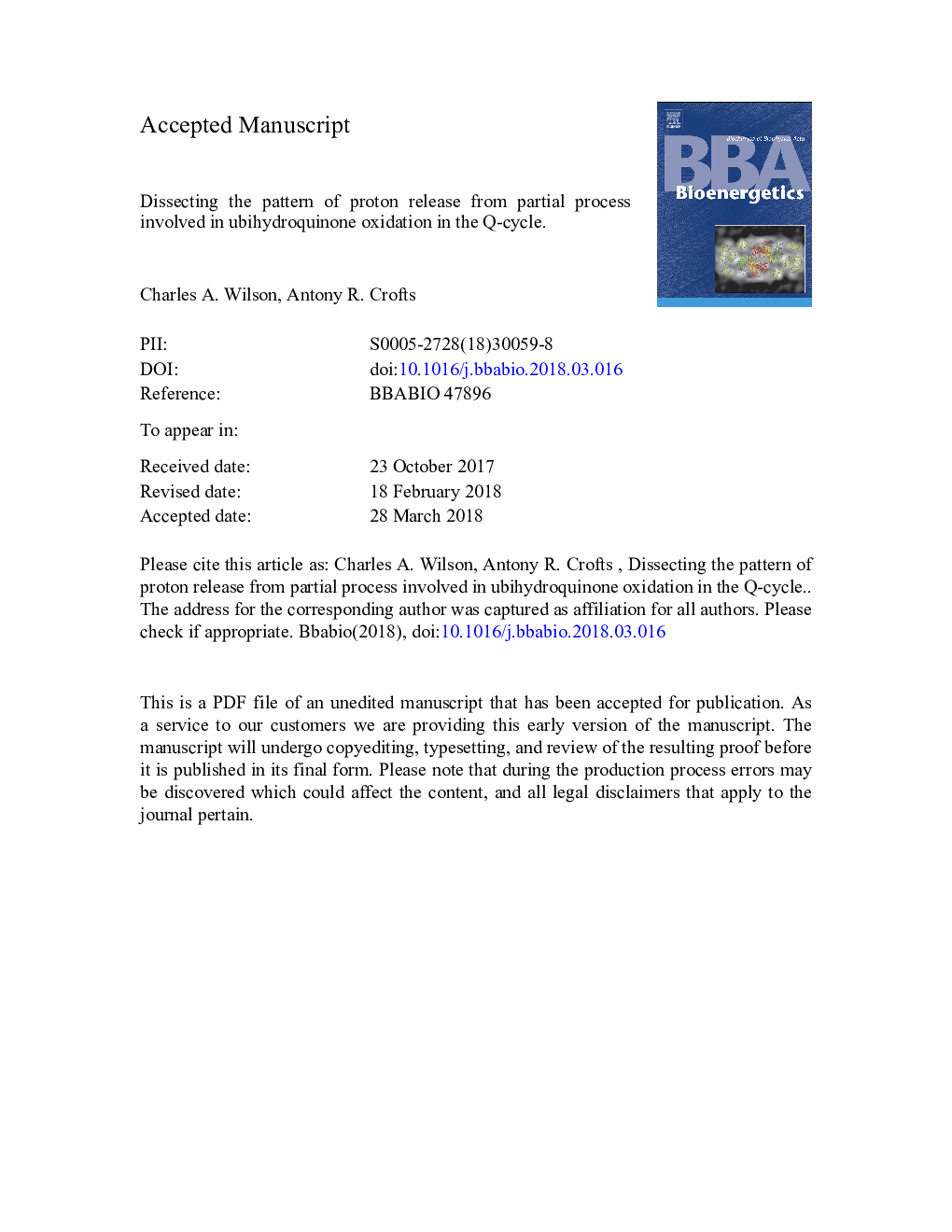| Article ID | Journal | Published Year | Pages | File Type |
|---|---|---|---|---|
| 8298563 | Biochimica et Biophysica Acta (BBA) - Bioenergetics | 2018 | 36 Pages |
Abstract
A key feature of the modified Q-cycle of the cytochrome bc1 and related complexes is a bifurcation of QH2 oxidation involving electron transfer to two different acceptor chains, each coupled to proton release. We have studied the kinetics of proton release in chromatophore vesicles from Rhodobacter sphaeroides, using the pH-sensitive dye neutral red to follow pH changes inside on activation of the photosynthetic chain, focusing on the bifurcated reaction, in which 4H+are released on complete turnover of the Q-cycle (2H+/ubiquinol (QH2) oxidized). We identified different partial processes of the Qo-site reaction, isolated through use of specific inhibitors, and correlated proton release with electron transfer processes by spectrophotometric measurement of cytochromes or electrochromic response. In the presence of myxothiazol or azoxystrobin, the proton release observed reflected oxidation of the Rieske ironâsulfur protein. In the absence of Qo-site inhibitors, the pH change measured represented the convolution of this proton release with release of protons on turnover of the Qo-site, involving formation of the ES-complex and oxidation of the semiquinone intermediate. Turnover also regenerated the reduced iron-sulfur protein, available for further oxidation on a second turnover. Proton release was well-matched with the rate limiting step on oxidation of QH2 on both turnovers. However, a minor lag in proton release found at pHâ¯7 but not at pHâ¯8 might suggest that a process linked to rapid proton release on oxidation of the intermediate semiquinone involves a group with a pK in that range.
Related Topics
Life Sciences
Agricultural and Biological Sciences
Plant Science
Authors
Charles A. Wilson, Antony R. Crofts,
